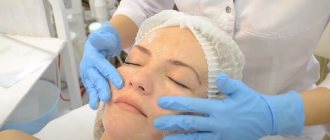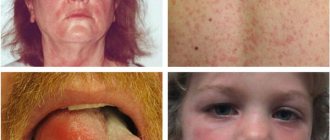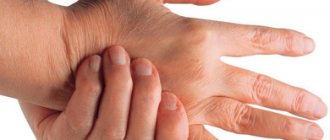Sebum (fat)
is an oily substance produced by the sebaceous glands. Sebum mixes with fat molecules called lipids to form a protective coating on the surface of the skin. Lipids moisturize the skin and protect it from harmful pathogens such as bacteria and fungi.
Sebum is produced by the sebaceous glands, which are located in the middle layers of the skin, near the hair follicles, and contains several types of fat molecules, or lipids. Human sebum is composed of 57.5% triglycerides and fatty acids, 26% wax esters, and 12% squalene, a lipid.
Sebum secretion
The face, scalp and chest have the highest concentration of sebaceous glands—each area of skin can have up to 900 of these glands per square centimeter. The sebaceous glands produce sebum through holocrine secretion, a process of programmed cell death. Cells called sebocytes dissolve and secrete sebum into the sebaceous glands.
Sebum passes through the follicular duct, which connects the sebaceous gland to the hair follicle. Growing hair lifts sebum up to the surface of the skin. Sebum production depends on changes in hormone levels. Sex hormones, especially testosterone, play a large role in regulating the activity of the sebaceous glands. Sebum production peaks shortly after birth and decreases during the first week of life. During puberty, testosterone levels increase, causing another surge in sebum production. Testosterone and sebum levels naturally decline with age.
Are the microbiome and acne connected?
We have already understood that various bacteria live on the skin, which can be both beneficial and pathogenic. Now we should consider their connection with acne.
So, bacteria and fungi colonize the skin because it is a convenient habitat for them, since it has a suitable food source - for example, some kind of epidermal lipids. And here we come to an extremely interesting moment. This lipid is released to the surface from the cell under the control of genes. In conclusion: what is the true cause of acne - a pathogenic bacterium or genes? The influence of genes or environment (i.e., the established microbiome)?
Functions of sebum
Sebum provides 90% of lipids - fat molecules on the surface of the skin. These lipids retain moisture and protect the skin from ultraviolet radiation and other harmful causes. It also transports fat-soluble antioxidants such as vitamin E to the surface of the skin. This action can prevent oxidative damage to the skin.
Meanwhile, sapienic acid and other fatty acids found in sebum help fight Staphylococcus aureus bacteria, which can cause staph infections and contribute to the development of atopic dermatitis. Many components of sebum, including its fatty acids and squalene, have anti-inflammatory properties.
Composition and functions of sebum
Sebum composition is a mixture of various lipids (fats). The composition may vary depending on gender, age, genetics and diseases.
Includes:
- saturated fatty acids - palmitic, stearic, oleic;
- squalene;
- sapienate and seboleate (unique fatty acids that are found only in sebum);
- unsaturated fatty acids - formic, acetic, propionic and others;
- glycerol;
- cholesterol;
- wax ether;
- phospholipids;
- metabolic products.
Check whether you are properly caring for oily, problematic skin.
Functions of sebum
Sebum has a number of functions for the skin, the main one of which is protective. That is why, when exposed to the sun, climate change, improper care or aggressive procedures, the skin begins to secrete even more sebaceous secretion for protection.
- Barrier – protecting the skin from external aggressive factors such as ultraviolet rays, pollution, dust and even microtrauma. By forming a sebaceous film, the skin builds a protective barrier to preserve deeper structures.
- Excretory - a number of drugs, toxins and skin metabolic products are excreted through the sebaceous glands by secreting sebum.
- Prevention of dehydration – the oily film on the skin prevents excess moisture evaporation with subsequent dehydration of the skin.
- Bactericidal - the unsaturated fatty acids included in the composition prevent the proliferation of pathogenic microflora and the development of inflammation, supporting the skin microbiome.
- Antioxidant – squalene contained in the composition neutralizes the effects of free radicals.
Benefits of sebum
Sebum components support skin health in several ways besides fighting inflammation:
- Hydration
: Sebum retains moisture within the skin, which helps keep skin hydrated and firm. - Antioxidant transport
: Sebum transports fat-soluble antioxidants to the surface of the skin. Antioxidants are natural compounds that protect against the damaging effects of free radicals. - Protection against microorganisms
: Sebum is slightly acidic, with a pH of 4.5 to 6.0, as a result it helps prevent pathogens such as bacteria and viruses from entering the skin.
Sebum production changes in response to age-related hormonal fluctuations, certain medications, and lifestyle factors. Overproduction of sebum can lead to oily skin. People with oily skin may have larger pores and appear oily or shiny.
Do bacteria and our immunity get along?
Bacteria can activate various signaling pathways in human skin cells (Fig. 4).
Figure 4. The effect of microorganisms can be positive, negative or neutral. The relationship between bacteria and skin is exemplified by the skin's innate ability to detect microorganisms through Toll-like receptors (TLRs). Other types of interactions are shown in the figure: at the top - the influence of ordinary skin bacteria, at the bottom - pathogenic. On a colored background - descriptions of molecules. The scheme is quite conventional and there are much more real interactions. And they are more complicated.
author's drawing
Bacteria are able to influence the innate immune response of keratinocytes, making them more or less reactive [14].
Excess sebum
Excess sebum combined with dead skin cells can form a plug inside the pore, leading to acne. This plug also traps bacteria in the pores, which can cause inflammation. You can control oily skin using a gentle but effective skin care routine that includes products containing:
- beta hydroxy acid
- benzoyl peroxide
- glycolic acid
- salicylic acid
Dermatologists recommend that people with oily skin avoid oil- or alcohol-based cleansers. These products can irritate the skin, potentially causing even more oil production. When treating acne you can use:
- local and oral antibiotics
- retinoids
- hormone therapy
- corticosteroids
- light therapy
- chemical peels
Where is increased fat content possible?
The content of the article
Problem areas:
- upper back;
- facial part, especially the chin, forehead and cheeks;
- cervical and thoracic parts of the body;
- genitals in both sexes;
- peripapillary zone.
These are the most common and most common, but there may be others. The only places on the body where acne cannot appear are the palms and feet. Due to the too thick and rough layer of the epidermis, incapable of this kind of inflammation.
Lack of sebum
Insufficient sebum production can also cause problems. The following factors can suppress sebum production:
- exposure to allergens or harsh chemicals, and certain oral contraceptives such as antiandrogens
- retinoids, such as isotretinoin (Accutane)
- malnutrition
- pituitary disorders
People with underactive sebaceous glands or too little sebum may have dry, flaky, and itchy skin. These symptoms may worsen if a person uses skin care products that contain harsh chemicals.
Moisturizers containing ceramides or humectants can help reduce dry skin. Ingredients include:
- squalene
- hyaluronic acid
- alpha hydroxy acids
- glycerol
- jojoba oil
You can treat dry skin at home with:
- exfoliate with a gentle facial scrub
- using a humidifier
- bathing in warm rather than hot water
- avoiding skin and hair care products containing alcohol and artificial fragrances
Interactions between P. acnes and other bacteria
P. acnes and related species can produce bacteriocins (substances that cause damage to bacterial cell structures). They usually act against closely related species, but at least one of them (propionicin) inhibits even some gram-negative bacteria and fungi. In addition, P. acnes is capable of producing 2 types of thiopeptide antibiotics (high sulfur content). They strongly inhibit protein synthesis in gram-positive bacteria. And some strains of P. acnes are able to suppress other strains of their own species! [13]
Bacteriocins and bacteriocin-like substances of P. acnes may be responsible for successful competition with other microorganisms, which explains its dominant presence in healthy follicles.
When to see a doctor
A person may want to see a doctor if they have oily or dry skin that does not improve with treatments or home care strategies. Also, consult your doctor if you experience bothersome or uncomfortable skin symptoms, such as:
- persistent or numerous pimples
- inflamed pimples causing emotional or physical discomfort
- recurring skin infections
- dryness, redness or itching
- areas of dry skin that bleed
Metabolic activity of P. acnes
Involvement in inflammation
A number of in vitro studies have shown that certain strains of P. acnes are able to trigger inflammation in skin cells through different mechanisms [19–22], while other strains are associated with healthy skin [23], [24]. Analysis of the P. acnes genome has revealed putative differences between them that may help explain its dual role [25].
It is clear that there are also proteins that are encoded in the genomes of all P. acnes, for example, CAMP (Christie-Atkins-Munch-Peterson) factors (5 in total). Inhibition of CAMP2 has been shown to attenuate inflammation in a mouse ear model. Their exact role in vivo is unclear, but they appear to be quite important since they are conserved in all P. acnes.
conclusions
The variety of microorganisms on our body is enormous. You can imagine the skin as a giant country whose population is constantly changing under the influence of the outside world, the immune system and interactions with neighboring countries. That is, with the microbiome of the surface of the eyes, intestines, and mucous membranes. The totality of genomes and metabolic pathways of some microbial symbionts can work for the benefit of our body [26], because some bacteria are capable of carrying out reactions beneficial to humans. Such representatives of the microbiome can be assessed as another human organ [27].
Changes within our body adjust the living conditions of bacteria. Thus, with increased secretion of sebum, changes in its qualitative composition occur.
The microbiome is a complex dynamic system. If we more fully characterize the relationships within it, it may provide additional insight into modern human evolution. Helps assess whether and how evolving technologies and lifestyle changes affect health and susceptibility to disease. In particular, to acne.
It is now known for sure that quantitative and qualitative changes in the microbiome complicate the course of acne. P. acnes secretions are thought to contain several proteins that may cause inflammation. However, since acne is a multifactorial disease, it is worth taking into account other causes, such as care, genetics, stress, nutrition, etc. In addition, P. acnes has a number of useful features: it “protects” us from S. aureus by acting as a role of a probiotic. So it is incorrect to blame her for everything.
Studies have begun to appear showing that the introduction of normal flora preparations improves skin condition (Aspergillus, Bifida Ferment Lysate, Lactobacillus/Rye Flour Ferment Filtrate). They show that one of the promising directions in the treatment of acne [28] (and not only) can be pro- and prebiotics, and drugs based on them.
Due to the complex systems of interaction between micro- and macroorganisms, the result is not always predictable. Studying the function of the microbiome in health and disease is an urgent task in medicine. And there are still many questions to be answered.
Thanks for reading the article! We will be happy to answer your questions in the comments.











